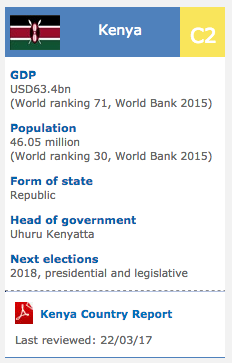Panama: Panama Art / Culture Profile 2012
2012/03/23
Panama Art / Culture Profile 2012
The culture of Panama derived from European music, art and traditions that were brought over by the Spanish to Panama. Hegemonic forces have created hybrid forms of this by blending African and Native American culture with European culture. For example, the tamborito is a Spanish dance that was blended with Native American rhythms, themes and dance moves.
Dance is a symbol of the diverse cultures that have coupled in Panama. The local folklore can be experienced through a multitude of festivals, dances and traditions that have been handed down from generation to generation. Local cities host live Reggae en Español, Cuban, Reggaeton, Kompa, Colombian, jazz, blues, salsa, reggae and rock performances.
Outside of Panama City, regional festivals take place throughout the year featuring local musicians and dancers. Another example of Panama's blended culture is reflected in the traditional products, such as woodcarvings, ceremonial masks and pottery, as well as in its architecture, cuisine and festivals. In earlier times, baskets were woven for utilitarian uses, but now many villages rely almost exclusively on the baskets they produce for tourists.
An example of undisturbed, unique culture in Panama stems from the Kuna Indians who are known for molas. Mola is the Kuna Indian word for blouse, but the term mola has come to mean the elaborate embroidered panels that make up the front and back of a Kuna woman's blouse. Molas are works of art created by the women of the Central American Cuna (or Kuna) tribe. They are several layers of cloth varying in color that are loosely stitched together made using an appliqué process referred to as "reverse appliqué".
The Christmas parade, known as El desfile de Navidad, is celebrated in the capital Panama City. This holiday is celebrated on December 25; The floats of the people in the parade are decorated with the Panamanians colors and the women dress in dresses called the Pollera the men dress in the traditional Montuno. In addition, the marching band in the parade which consists of drummers keeps the crowds entertained. In the city, a big Christmas tree is lit with Christmas lights, and everybody surrounds the tree and sings Christmas carols.
The traditional Panamanian dish for Christmas usually includes chicken tamales, arroz con pollo (chicken and rice), puerca asada, pernil, pavo (turkey) and relleno (stuffing). Bowls of fruits and fruitcake are set out on the tables along with the dishes. Along with these foods and dessert, a traditional drink is serve which is called Ron Ponche (eggnog). Which consists of: two cans of condensed milk, three cans of evaporated milk, six eggs and half a bottle of rum and nutmeg for some extra flavor.
A Panamanian women’s traditional clothing is called the Pollera. The Pollera originated in Spain in the 16th century. Later on the Pollera was used as a typical dress in Panama in the early eighteen hundreds. The Pollera was worn by women servants or maids: “it was especially the dress of the wet nurses who nursed the children of the family” (De Zarate 5). As years went on, the upper class women adopted the dress.
The original Pollera consists of a female wearing a ruffled blouse that is off her shoulders. The skirt is on the waistline with gold buttons. The skirt also has ruffle so when she lifts it up, it looks like a peacock’s tail or a mantilla fan. The designs on the skirt and blouse are usually flowers, or birds. A two large matching mota(pom-pom) is on the front and back, four ribbons are hanging from the back and the front on the waist line, caberstrillos(five chains of gold) are hanging from the neck to the waist, a gold cross or medallion that’s on a black ribbon is worn as a choker and a silk purse is worn the female waistline. Zaricillos(earrings) are usually gold or coral and to complete the outfit the female wears slippers which matche the color of her Pollera . Her hair is usually worn in a bun held with three large gold combs which have some pearls and is worn like a crown. The best pollera can usually cost up to ten thousand dollars and may take a year to complete. The men also wear traditional clothing. Their outfits consist of white cotton shirts, trousers and woven straw hat. This traditional clothing can be worn in parades, where the females and males do a traditional dance. The females do a gentle sway and twirl their skirts while the men hold their hats in their hands and dance behind the females.
A pollera is made with a “cambric” or “fine linen” (Baker 177). The color of the Pollera is always white and it is usually about thirteen yards of material . Today there are different types of polleras; The Pollera de Gala consists of a short sleeved ruffle skirt blouse, two full length skirts and a petticoat. The girls wear tembleques a gold and tortoise shell combs with pearls in it in their hair. Gold coins and jewelry are added on the outfit. The Pollera Montuna is a daily dress, with a blouse , a skirt with a solid color, a single gold chain and a pendant earrings. The hair piece is a natural flower in the hair. This Pollera is slightly different from the rest because instead of off the shoulder blouse, the females wear a fitted white jacket, shoulder pleats and a flared hem
- Panama News
-
- AFGHANISTAN: UNWTO: International tourism – strongest half-year results since 2010
- ARGENTINA: Odebrecht agrees to pay $220 million fine, aid Panama probe
- PANAMA: Panama’s government steps up support for agriculture amid falling exports
- PANAMA: Developers seek to tap Panama’s retail sector, with numerous projects in the pipeline
- AFGHANISTAN: Higher earning Why a university degree is worth more in some countries than others
- ARGENTINA: China looks to deepen ties with Latin America
- Trending Articles
-
- CHINA: China welcomes Guinea to take part in Belt and Road Initiative
- UGANDA: Ugandan Govt Starts Verifying International Academy Teachers
- CAMEROON: Poor End of Year Results for Cameroon Students
- JAPAN: How Honda lost its mojo - and the mission to get it back
- UNITED STATES: Spotify, Hulu target students with discounted bundle
- AUSTRALIA: Queensland Bauxite Gains State Approval of Mineral Development Work Program












